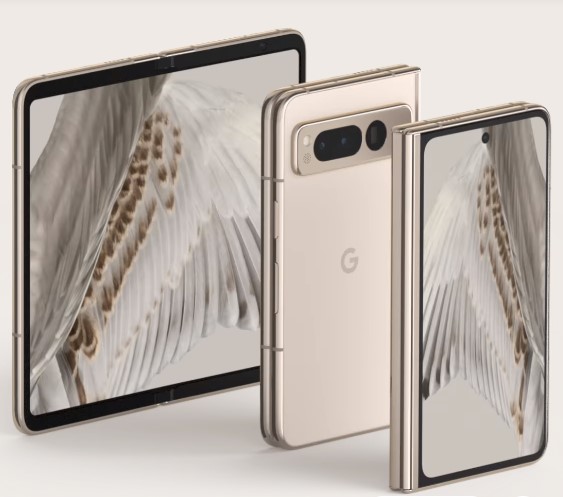Introducing the Google Pixel Fold, this comprehensive article aims to provide an insightful review of this innovative product, catering to those who are contemplating their first venture into the world of folding phones. For a more detailed analysis, including comparisons, smackdowns, and in-depth reviews, you can explore additional content on the subject.
The Google Pixel Fold presents a novel aspect ratio, marking a significant departure from the conventional folding phone designs. Positioned as the epitome of versatility, it seamlessly transitions between a compact phone and a medium-sized tablet. Unlike its tall and narrow counterparts, the Pixel Fold introduces a game-changing 17.4 by 9 aspect ratio for its outer screen—a display format close to the widely familiar 16×9 golden ratio. This departure from the trend of elongated screens, often influenced by marketing strategies, is a notable feature that sets the Pixel Fold apart.
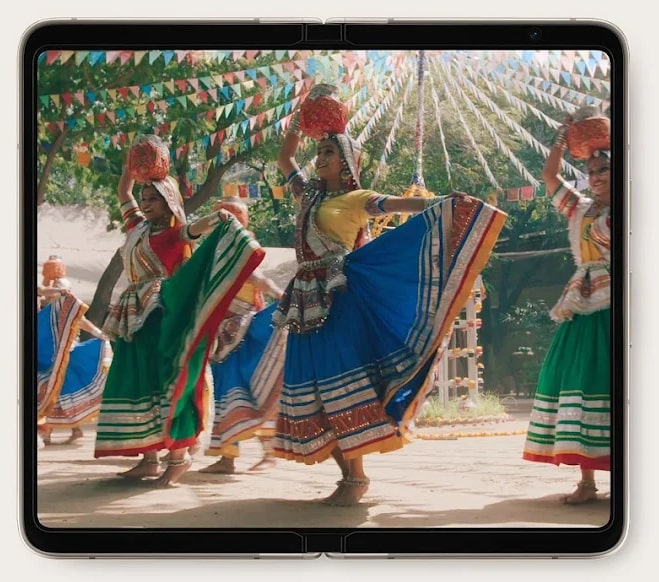
One of the standout features that has garnered considerable attention is the outer screen’s usability. With its 17.4 by 9 aspect ratio, akin to the standard 16×9 ratio found in YouTube videos, the outer screen offers a practical display even when the device is closed. This characteristic aligns with the idea that users should find the outer screen engaging and functional without the immediate necessity to unfold the device. While the primary objective might be to open up the phone for larger content consumption, the usability of the closed state adds to the overall appeal.

The device’s aspect ratio is a key selling point that becomes more evident once you physically interact with it. The outer screen’s design, close to the 16×9 golden ratio, enhances the overall user experience. The 17.4 by 9 aspect ratio ensures that the outer screen is conducive to various activities, such as watching YouTube videos, providing a refreshing departure from the elongated screens that have become commonplace in the smartphone market.
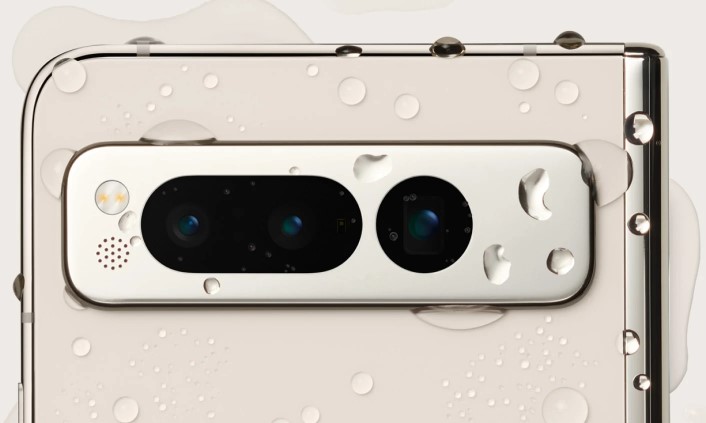
Moving to the inner display, which spans 7.6 inches, it introduces a landscape orientation that is nearly square. While this may not seem drastically different, the psychological impact can be notable, especially considering potential challenges with apps that may not be optimized for this specific aspect ratio. This has been a recurring issue in the Android ecosystem, particularly with apps that struggle to adapt to varying aspect ratios and tablet-sized displays. However, Google’s efforts in optimizing over 50 of its applications for larger screens with different aspect ratios alleviate some concerns, setting a positive trend for app compatibility.
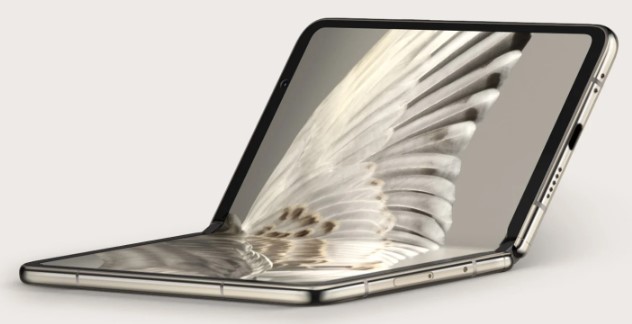
The OLED display on the inner screen, with a 120 Hz refresh rate, enhances the visual experience, ensuring smooth transitions and vibrant colors. The inclusion of an OLED display on the outer screen is expected and aligns with industry standards. Gorilla Glass Victus protects the outer screen, a testament to the durability considerations in the Pixel Fold’s design. The outer display, measuring 5.8 inches, may appear relatively small, catering to those who prefer compact phones. The overall thickness and weight, characteristic of folding phones, are factors potential users should bear in mind, especially if weight sensitivity is a concern.
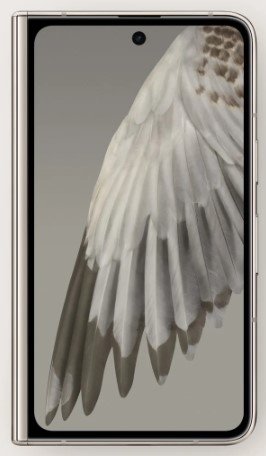
The folding mechanism of the Pixel Fold allows it to achieve a flat fold, eliminating the gap often associated with foldable devices. This engineering feat contributes to the device’s aesthetic appeal and practicality, as it ensures a seamless transition between folded and unfolded states.
In short, the Google Pixel Fold emerges as a notable contender in the foldable phone landscape, presenting a unique aspect ratio, vibrant displays, and a design that combines practicality with innovation. While aspects such as potential app optimization challenges and the device’s weight might be considerations for some users, the Pixel Fold’s departure from the norm in terms of aspect ratio and usability in the closed state adds a layer of versatility that sets it apart in an increasingly competitive market. Exploring the full in-depth review, comparisons, and additional content can offer a more comprehensive understanding of the Pixel Fold’s capabilities and limitations.
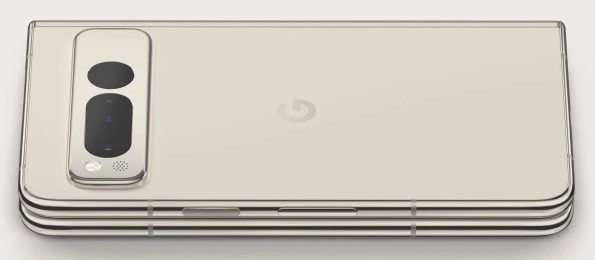
This extensive review about the Google Pixel Fold aims to provide a detailed exploration of this groundbreaking device. As we delve into its features, capabilities, and unique aspects, this article serves as a comprehensive guide for those intrigued by the prospect of owning a folding phone. For a more thorough understanding, the analysis covers various facets, including tabletop mode, cameras, specifications, and software intricacies.
Tabletop mode emerges as a noteworthy feature that leverages the expansive inner screen. Beyond the conventional appeal of having a larger display for videos, tabletop mode facilitates multitasking, particularly evident in applications like Google Meet. In this mode, users can simultaneously watch videos on the upper screen while controlling the application through the lower section—an innovative and practical approach. This feature adds a layer of convenience, making the Pixel Fold more than just a device for passive content consumption. Whether participating in virtual meetings or engaging in video content, tabletop mode enhances the overall user experience.
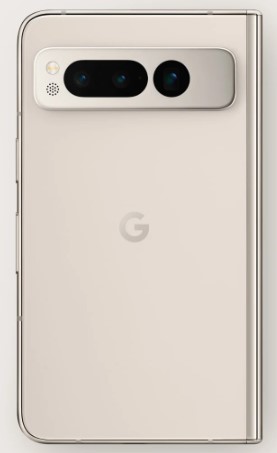
Additionally, tabletop mode extends its utility to YouTube, offering a similar dual-screen setup for enhanced functionality. The device’s versatility in adapting to different use cases is a testament to its design considerations, catering to diverse user preferences and needs. The Pixel Fold’s flexibility in accommodating various tasks, even in a closed state, sets it apart in the realm of folding phones.
Shifting our focus to photography, a domain often subject to compromise in folding phones, the Pixel Fold defies the trend. Despite the challenges posed by the device’s form factor, Google manages to incorporate camera specifications comparable to its flagship Pixel 7 Pro. The triple rear camera setup, featuring telephoto, main, and ultra-wide-angle lenses, delivers impressive image quality. Noteworthy is the fact that only the outer front camera is utilized for Face Unlock, ensuring that the primary imaging capabilities are not sacrificed for the folding mechanism. The Pixel Fold’s camera prowess is underscored by features like portrait blur and Magic Eraser, ensuring users receive a flagship-level photography experience.
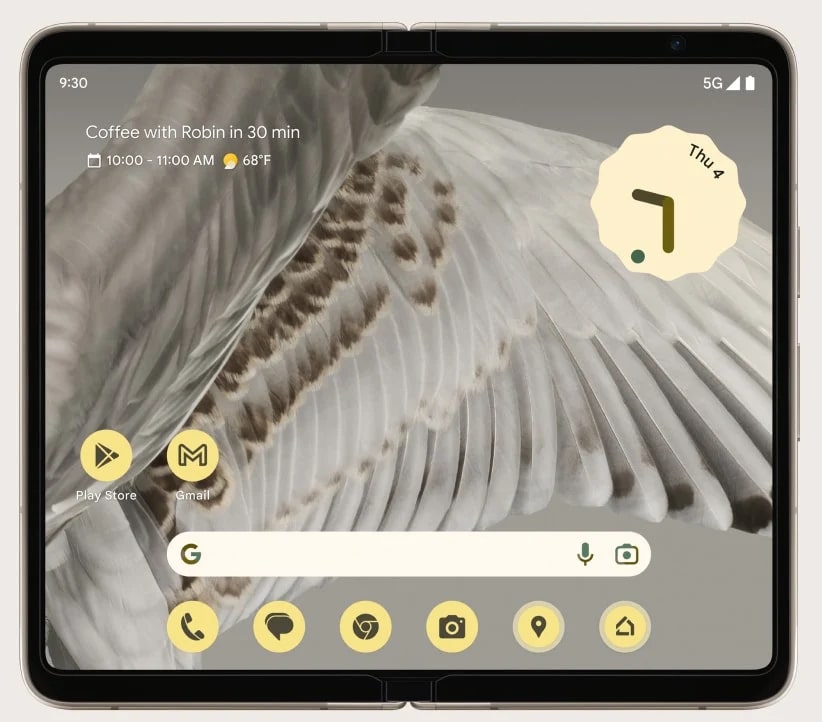
Furthermore, the Pixel Fold inherits Google’s commitment to ongoing software updates and features. Familiar features such as Magic Eraser, which intelligently removes unwanted elements from photos, and various other enhancements available through the Google Photos app contribute to the overall appeal. These features, including Magic Eraser, extend beyond the Pixel Fold, being accessible to Google One subscribers on any Pixel device, showcasing Google’s dedication to delivering a consistent user experience across its ecosystem.
In terms of processing power, the Pixel Fold employs Google’s Tensor G2 processor, coupled with 12GB of RAM and storage options of 256GB or 512GB using UFS 3.1 technology. The inclusion of stereo speakers, three microphones, Wi-Fi 6E, and 5G support, encompassing both millimeter wave and sub-6, positions the Pixel Fold as a well-equipped device. The choice between carrier-supported options and unlocked purchases directly from Google provides users with flexibility in obtaining the device.
Battery considerations are paramount in any mobile device, and the Pixel Fold boasts a substantial 4821 milliamp battery. Supporting 30-watt charging, it ensures a balance between performance and efficient power replenishment. While the charger is not included in the box, the device embraces Qi wireless charging, offering users multiple options to cater to their charging preferences.
Software-wise, the Pixel Fold incorporates Google’s Tensor G2 processor seamlessly into its user interface, providing a responsive and smooth experience. Concerns about battery life are alleviated as the device manages power consumption effectively. The plastic screen protector covering the inner display, often a source of glare in outdoor conditions, does not impede visibility, even under the bright Californian sun.
The Google Pixel Fold emerges as a commendable debut into the realm of folding phones. Through innovative features like tabletop mode, a robust camera system, powerful specifications, and thoughtful design considerations, Google has successfully entered the folding phone arena. The Pixel Fold not only caters to the demands of users seeking a versatile and high-performance device but also integrates seamlessly into the broader Pixel ecosystem. This comprehensive overview aims to equip potential users with a nuanced understanding of the Pixel Fold’s capabilities, ensuring an informed decision-making process.
The Google Pixel Fold stands out as a notable entry into the realm of folding phones, marking Google’s foray into this innovative form factor. In the United States, where the options for book-style folding phones are limited, the Pixel Fold emerges as a compelling alternative to Samsung’s offerings. As we embark on an exploration of this device, this analysis aims to provide an opinionated perspective, moving beyond a mere enumeration of specifications and features.
Let’s address the elephant in the room first—the price. Priced at $1799, the Pixel Fold aligns with the starting price of the Samsung Galaxy Z Fold 5, a device that will also undergo scrutiny in a separate review. Early on, Google enticed potential buyers with enticing trade-in deals and the inclusion of a Pixel watch. However, those initial promotional offerings seem to have dwindled, and with the phone gaining popularity, the likelihood of substantial discounts appears diminished. For those contemplating a purchase, the initial sweet deals may have waned, making the current market conditions less favorable in terms of pricing.
Transitioning from pricing considerations, there’s a lingering complaint about the pricing consistency in the folding phone market. Despite advancements, the Pixel Fold and its contemporaries maintain a consistent price point of $1799. One might expect that, over the years, either prices would trend downwards or features would witness significant leaps. However, neither of these expectations has materialized. It’s a point of contention that despite the coolness factor associated with folding phones, the pricing landscape remains relatively static.
Despite these pricing concerns, folding phones, including the Pixel Fold, continue to exude a cool and innovative aura. As someone who appreciates the uniqueness of folding devices, the transformative experience of transitioning from a phone to a tablet is indeed captivating. The Pixel Fold, in particular, caters to users who prioritize a phone-first approach with the added flexibility of unfolding into a tablet when necessary. The allure lies in the ability to seamlessly switch between a compact phone size and a larger tablet form factor, providing a versatile user experience.
The defining feature of the Pixel Fold, distinguishing it from its Samsung counterparts, is its form factor. Departing from the convention of tall and narrow designs, reminiscent of Samsung’s folding phones, the Pixel Fold adopts a more user-friendly aspect ratio. At 5.8 inches, the outer display delivers an OLED, high-refresh experience without the inconveniences of an excessively elongated form. This departure from the tall and skinny design makes the Pixel Fold more appealing for tasks like watching videos, where a more standard aspect ratio aligns with user preferences.
The primary draw of the Pixel Fold is its adherence to a normal aspect ratio, deviating from the elongated designs that dominate the folding phone landscape. With dimensions slightly taller and narrower than the average 16:9 ratio, the Pixel Fold strikes a balance between usability and innovation. The keyboard, for instance, avoids the pitfalls of being overly narrow, catering to practical functionality. This normal aspect ratio, reminiscent of phones from a couple of years ago, positions the Pixel Fold as a device that prioritizes practical phone usage.
In essence, the Pixel Fold caters to users who seek a phone that excels in its primary function but has the added capability to transform into a tablet when needed. The usability when closed, functioning as a conventional phone that fits seamlessly into pockets, aligns with practical user scenarios. The device’s thickness, inherent to the folding design, becomes inconsequential when closed, allowing users to prioritize a phone-first experience.
The Pixel Fold introduces a unique aspect that could be considered an advantage, yet its effectiveness hinges on several factors. When you unfold the device, it defaults to a landscape orientation, capitalizing on its nearly square 7.6-inch OLED inner display with a high refresh rate. The landscape orientation lends itself well to certain use cases, particularly those involving video consumption, aligning with activities typically associated with a larger screen. The concept is undoubtedly compelling, providing an immersive landscape experience for watching videos or engaging in other content that benefits from this orientation.
However, the potential drawback stems from the current state of Android apps and their adaptability to unconventional aspect ratios and larger screens. While Google attempts to address this by launching devices like the Pixel Fold and emphasizing the Pixel tablet, many Android applications still struggle to optimize for varied screen real estate. Google has optimized its own suite of apps, such as Gmail and Google Meet, offering a seamless experience with effective use of the available space. Yet, the broader Android app ecosystem presents challenges, especially with popular social media platforms like Instagram.
In the case of apps like Instagram, notorious for their slow adaptation to larger screens, using the Pixel Fold in landscape mode may result in unsightly black bars, creating a less-than-optimal user experience. Users often find themselves having to compromise, shifting content left or right to mitigate the pillar boxing effect. This limitation becomes apparent when compared to standard candy bar-shaped large-screen phones like the Galaxy S23 Plus or Ultra, where the difference in screen utilization may not be significant.
The potential for the Pixel Fold to fully capitalize on its unique orientation depends on the evolution of Android apps. If developers embrace dynamically resizable designs and offer robust support for higher DPIs, users could witness a significant improvement in the overall experience. The Pixel Fold’s landscape default could transition from a potential drawback to a distinctive advantage, offering a truly immersive and efficient use of screen real estate.
Beyond the aspect ratio considerations, another compelling reason to consider the Pixel Fold is its Pixel lineage, particularly its camera capabilities. The device inherits approximately 90 to 95% of the imaging prowess found in the Pixel 7 Pro. Notable features include a 5x telephoto zoom with optical capabilities, delivering high-quality results. Additionally, the Pixel Fold boasts an impressive ultra-wide-angle camera, surpassing its Samsung counterparts in terms of image quality. The inner selfie camera maintains the Pixel tradition of excellence, while facial recognition and fingerprint login provide convenient and secure ways to access the device.
Let’s delve into the realm of smartphone photography with a focus on the Google Pixel Fold camera. This device, undoubtedly, has made quite an impression with its remarkable camera capabilities. The images captured by the Pixel Fold’s camera are nothing short of stunning, igniting a sense of motivation to explore and capture the world around you. It transcends the realm of ordinary smartphone photography, making it a compelling choice for those who appreciate the art of capturing still moments.
In the realm of videography, Samsung has carved out its niche, excelling in delivering a commendable video recording experience. This raises the point that if your primary focus is on video content creation, Samsung might emerge as the preferable choice. However, when it comes to the realm of still photography, the Pixel Fold unequivocally takes the crown. It’s important to note that while these high-end camera phones can deliver exceptional results, they do not serve as direct replacements for dedicated standalone cameras tailored for serious photography enthusiasts. Nevertheless, in alignment with the mantra that the best camera is the one you have with you, the Pixel Fold steps up to the plate, promising not to disappoint.
Comparable to the photographic prowess of the iPhone 14 Pro line, the Pixel Fold stands tall in terms of photo quality. The device introduces Pixel-specific features that elevate the photography experience. One noteworthy feature is the Magic Eraser, an innovative tool that empowers users to seamlessly remove unwanted elements from their photos.
A simple gesture of circling the undesirable element with a finger, and poof, it’s gone. This feature extends its functionality to photobombers, intelligently identifying and removing intrusive elements. The Pixel Fold also incorporates a photo blur feature, although its necessity might be subjective given the device’s fast shutter speed, typical of Samsung cameras.
Now, let’s shift our focus to the aspects that might be perceived as drawbacks. The central processing unit (CPU) of the Pixel Fold, while not subpar, may not be the absolute fastest available. Sporting the Google Tensor G2 processor, which interestingly draws on Exynos architecture developed by Samsung, the CPU might fall short of claiming the title of the fastest in the market.
While the average user might not discern a significant difference in day-to-day activities, including multitasking and casual gaming, the G2 tends to generate more heat. This phenomenon translates to a warmer feel when holding the phone, a factor that may be more noticeable in regions with higher ambient temperatures.
It’s important to highlight that the device’s wireless charging and approximately 25-watt wired charging capabilities might experience slowdowns if the G2 processor heats up excessively during charging. While this issue hasn’t been universally reported, some users have noted it, signaling that the G2 processor might not be the epitome of CPU performance. Nevertheless, it adequately handles the AI features associated with the camera system.
Moving on to storage considerations, the Pixel Fold offers users a choice between two configurations: 256GB and 512GB. The base model, priced at $1799, provides ample storage for most users, while those seeking additional space can opt for the 512GB variant, which incurs an additional cost of approximately $120. The color options, essentially a sleek obsidian black and an elegant creamy white, add a touch of personalization to the device.
Let’s delve into a comprehensive exploration of the Google Pixel Fold, scrutinizing its various facets, from the hardware to the user experience, and everything in between. Buckle up for a detailed journey into the realm of this folding phone, assessing its strengths, limitations, and overall appeal.
Beginning with the heart of the device, the central processing unit (CPU) plays a crucial role in dictating performance. While some may yearn for a more cutting-edge and contemporary CPU, the Google Pixel Fold incorporates the Google Tensor G2 processor. While not the fastest on the market, it manages to deliver a satisfactory performance for day-to-day activities, multitasking, and casual gaming. The warmth generated by the G2 during extended usage might be more noticeable in regions with higher ambient temperatures, but for the average user, this might not be a dealbreaker.
Addressing the physical design elements, the Pixel Fold introduces an intriguing aspect with its reasonably substantial bezels, a departure from the trend of minimalistic bezels seen in contemporary smartphones. Initially, this might raise eyebrows, but in practical use, the bezels prove to be a welcome feature. The act of folding and applying pressure on the screen necessitates a tangible and secure area to press when closing or opening the device. While the bezels might not align with the current aesthetics of slim bezels, they offer a practical advantage, enhancing the tactile experience of using a folding phone.
The folding mechanism of the Pixel Fold incorporates a flat folding hinge, deviating from the conventional inward-folding design. This innovation not only contributes to the aesthetics of the device but also holds the promise of bolstering the longevity of the screen. The teardrop-like folding pattern aids in mitigating stress on the display, potentially enhancing its durability over time. Like other folding phones, the Pixel Fold features a plastic screen protector that safeguards the bendable glass layer, a crucial element in the design of foldable displays.
Considering the display quality, the Pixel Fold boasts a vivid and bright screen, capable of reaching a maximum outdoor brightness of around 1500 nits. However, an intriguing observation is the relatively short duration for which the screen remains at maximum brightness. While this might be a protective measure against potential screen damage or an effort to manage internal heat, it remains a noteworthy aspect. Nevertheless, outdoor usability does not pose a significant issue, aligning with the standard experience observed with other smartphones.
The plastic screen protector, a common element in foldable devices, manages to strike a balance between reflectivity and resistance to fingerprints. It refrains from being excessively reflective and mitigates fingerprint smudges, contributing to an overall satisfactory user experience. Google adheres to a natural color profile for both the inner and outer displays, eschewing the ultra-vivid, amped-up color palette. While Samsung’s vivid mode might offer a more vibrant color representation, the Pixel Fold’s color accuracy and purity remain commendable.
Moving on to the audio realm, the Pixel Fold’s speakers, despite the spacious design conducive to robust audio, offer an audio experience that falls within the realm of adequacy. Surprisingly, it doesn’t stand out as a highlight, a domain where the Samsung Galaxy Z Fold claims superiority. Additionally, it’s worth noting that the Pixel Fold supports touchscreen input exclusively, lacking compatibility with pen input. For users who prioritize stylus input, this might be a decisive factor against choosing this device.
In terms of performance, the Pixel Fold manages to strike a balance between functionality and efficiency. While it may not boast the most cutting-edge CPU, the device’s overall performance remains satisfactory for typical use cases. The cameras, a crucial aspect for many users, deliver a commendable performance, contributing to an enjoyable photography experience. The build quality of the Pixel Fold is noteworthy, featuring a frosted glass back that strikes a balance between aesthetics and functionality. The device’s weight distribution adds an element of security, reducing the likelihood of accidental slips from the hand, a practical consideration often overlooked.
As a fervent advocate of folding phones, the Pixel Fold aligns with the form factor preferences of users who prioritize a device that remains highly functional even when closed. The combination of satisfactory performance, impressive camera capabilities, and an aesthetically pleasing design contributes to the Pixel Fold’s appeal. The frosted glass back, designed to minimize slipperiness, adds a touch of elegance to the device.
In summary, considering the Pixel Fold as a “first attempt” in the realm of folding phones, Google has executed a commendable job. The device not only embraces innovation but also establishes a strong foundation for future iterations. The anticipation for Google’s subsequent endeavors in this space is palpable, as users eagerly await the evolution of this promising device. The Pixel Fold, with its unique features and thoughtful design elements, sets the stage for an exciting future in the realm of folding smartphones.
Let’s explore the extensive pros and cons of the Google Pixel Fold, diving into various aspects of its design, performance, camera capabilities, software, and more.
Pros:
- Innovative Design: The Pixel Fold introduces a distinctive design with a book-style folding mechanism, providing users with a compact phone that transforms into a larger tablet when needed.
- Usable Outer Screen: Unlike some foldable phones with impractical outer screens, the Pixel Fold’s 5.8-inch OLED outer display offers a functional size for everyday tasks, making it convenient for quick interactions without unfolding the device.
- Reasonable Bezels: The inclusion of noticeable bezels contributes to the practicality of the device. These bezels offer a secure area to press when folding and unfolding the phone, enhancing the overall user experience.
- Flat Folding Hinge: The flat folding hinge design not only adds a sleek aesthetic but also may contribute to the longevity of the device by reducing stress on the folding display over time.
- Natural Color Profile: The Pixel Fold sticks to a natural color profile for its displays, providing accurate color representation without overly vibrant hues. This approach caters to users who prefer a more realistic color palette.
- Camera Capabilities: The Pixel Fold’s camera system, akin to the Pixel lineup’s reputation, delivers high-quality still photography. The inclusion of a 5x telephoto zoom, a good ultra-wide angle, and Pixel features like Magic Eraser enhance the overall imaging experience.
- Frosted Glass Back: The frosted glass back not only adds an elegant touch to the design but also minimizes slipperiness, contributing to a more secure grip.
- Weight Distribution: The distribution of weight in the Pixel Fold is designed to prevent the device from easily slipping out of the hand, offering users a sense of security when handling the device.
- Satisfactory Performance: While not sporting the fastest processor on the market, the Google Tensor G2 processor provides satisfactory performance for everyday tasks, multitasking, and casual gaming.
- Quality Build: The overall build quality of the Pixel Fold is commendable, reflecting a premium and durable feel that aligns with its high-end positioning in the market.
Cons:
- Processor Limitations: The Google Tensor G2 processor, while competent for daily use, may not match the cutting-edge performance of some of its competitors. Users seeking the fastest available CPU might find this limiting.
- Limited Storage Options: The Pixel Fold offers limited storage choices, with options of 256GB and 512GB. While 256GB is ample for many users, the absence of a more budget-friendly lower storage variant might deter some potential buyers.
- Audio Quality: Despite the spacious design conducive to high-quality audio, the Pixel Fold’s speakers offer an audio experience that falls within the realm of adequacy, without standing out as a notable feature.
- No Pen Input Support: The absence of pen input support might be a drawback for users who value stylus functionality, especially when considering the productivity potential of a larger foldable screen.
- Folding Crease: Like all foldable phones, the Pixel Fold exhibits a folding crease. While many users overlook this, those with a keen eye or OCD tendencies might find it a persistent visual distraction.
- Plastic Screen Protector: The device includes a plastic screen protector that, while necessary for protecting the flexible display, may not offer the same tactile feel as traditional glass screens. Some users might find this less satisfying.
- Short Maximum Brightness Duration: The Pixel Fold’s screen reaches high outdoor brightness levels but tends to stay at maximum brightness for a relatively short duration. This might impact users who prefer extended periods of maximum brightness.
- App Optimization Challenges: The folding form factor presents challenges for app developers, and not all Android apps are optimized for the Pixel Fold’s unique aspect ratios. This could result in less-than-ideal experiences for some applications, particularly in landscape mode.
- Warmth during Extended Use: The Google Tensor G2 processor might generate warmth during prolonged use, potentially impacting charging speed and overall user comfort. This could be more noticeable in warmer climates.
- Premium Price: The Pixel Fold comes with a premium price tag, aligning with other flagship foldable devices. The high cost might be a deterrent for budget-conscious consumers.
In conclusion, the Google Pixel Fold presents a compelling option for users seeking a unique folding phone experience. While it excels in various aspects, such as design innovation, camera capabilities, and build quality, it does come with some trade-offs, including processor limitations and a premium price. Users must weigh these pros and cons based on their priorities and preferences to determine if the Pixel Fold aligns with their needs.
Google Pixel Fold
-
Performance - 97%97%
-
Price - 98%98%
-
Value - 98%98%

